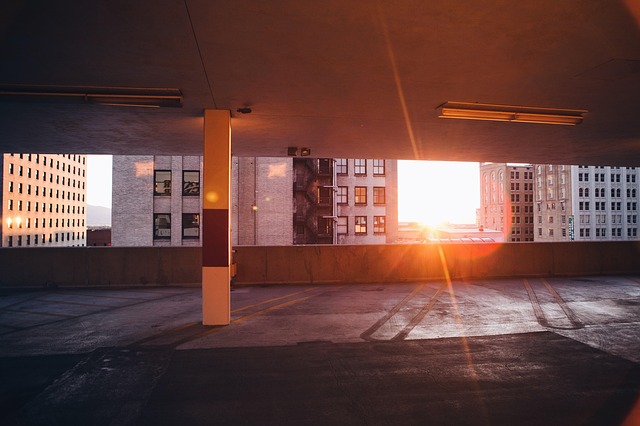Taking solar access into account is critical to quicker development application approvals. Discover the guidelines that architects and developers should follow.
Everyone knows that the development application (DA) approval process can be quite tedious and complex. There are many considerations to keep in mind to ensure that a building gets approved without issues.
Solar access is among the essential considerations.
As certain areas get increasingly crowded with high-rises, solar access is becoming a rising concern. At the same time, the regulations surrounding it might not be as clearly defined as other aspects of developments. For this reason, architects might struggle to ensure that their buildings meet requirements.
In this article, you’ll get a more in-depth overview of everything you need to know about solar access. But first, let’s take a look at why it deserves your attention.
The Right to Sunlight
Over the past few years, there have been a number of disputes regarding solar access. More specifically, the overshadowing of properties and public spaces has become quite an issue.
For instance, inner-city parks in Melbourne are under an increasing threat of overshadowing. At one point, 14 parks were at risk of getting overshadowed. The Melbourne City Council had to step in several times to determine if the offending development projects were feasible.
At the core is the fact that there hasn’t been an explicit update to overshadowing laws since 1999. Disputes get solved on a case-by-case basis, which can create a lot of confusion. Certain developments get approved despite overshadowing problems, while others are not. And even the projects that get an approval often do so only after a dreadfully long process.
With this in mind, not addressing solar access can put a project at risk. Let’s see what you should factor in to minimise this and ensure a smooth DA approval.
Factor #1. Beware of Unnecessary Overshadowing
In the past, DAs would get approved regardless of solar access. This is mostly why it’s such a big concern today. The relevant authorities became more stringent as a result of this realisation. Today, a DA might get rejected if the property overshadows the surrounding properties out of reason.
This applies to both the structure and landscaping of the property.
Developers and architects need to look beyond the building’s height when assessing solar access. Recently, tree planting and preservation started to get more attention in this context. In Beecroft, for instance, trees are heritage items, which means that they can’t be easily removed. You might not even be able to remove them at all in some cases.
On top of this, the Victoria Planning Provisions recently underwent certain changes. Architects must now consider the placement of solar collectors in the planning process. It’s yet another addition that can make the DA process more tedious if not taken into account.
Factor #2. Understand the Necessary Design Guidelines
Certain legal regimes in Australia don’t explicitly protect solar access. But that doesn’t mean that you can design and build without any concern for such access. Even though there may not be a strict law, there are still quite a few guidelines to follow.
For example, your building should allow for a minimum of two hours of solar access to neighbouring properties in Victoria. In NSW, principal living spaces should receive at least three hours. And both of these guidelines use the winter solstice as a reference point. On the shortest day of the year, properties should receive these solar access timeframes between 9 am to 3 pm.
Factor #3. Take the Carbon Footprint Into Account
Reducing the carbon footprint is one of the leading environmental goals in recent times. It’s a critical mission on a global scale, with businesses and individuals working on it together.
Developers and architects have an essential role to play here. Reducing the carbon footprint of their projects should be one of the main focal points. This goes for both the construction and the operational emissions once the building gets erected.
Those in position to do so are slowly working towards a concrete legal framework that will address this issue. But for now, that framework comes down to a few important design principles. For the most part, they relate to passive solar design and the offset of the energy that a building uses.
The installation of solar collectors is a great example of such guidelines. To be precise, the collectors should be on the north-facing and west-facing roof areas.
As for passive solar design, there are a few guidelines that you need to consider. First, daytime living areas should have a northerly orientation. Also, the northern facades should have appropriate glass areas, with passive shading of glass factored in.
Even though none of this is strictly regulated by law, proactive developers are following these guidelines. This would show the authorities that they’re staying up-to-date with recent trends. And it can go a long way towards getting your DA approved without hassle.

Factor #4. Consider Thermal Mass
When thinking about solar collectors, people often focus solely on solar panels. However, these are only part of the equation.
The thermal mass, such as properly insulated concrete floors, is also important to consider. These floors are among the main features of passive solar design. After all, they technically also collect solar energy to maximise energy efficiency.
In Australia, there is yet any law reform that would address thermal mass. But we can expect one in the future. Thermal mass should receive a similar level of protection as actual solar collectors. And it’s largely a matter of time before this happens.
Factor #5. Factor in the Area Density
There’s no nation-wide legal framework for solar access. This is why project feasibility in this context is usually assessed on a case-by-case basis. And one of the crucial factors to consider is the density of the project’s area.
In high-density areas, things like overshadowing are often considered almost inevitable. Because of this, there’s very little protection given to the surrounding properties. But this doesn’t mean that you should ignore the guidelines. With the rising necessity for legal reform, it’s a matter of time before more stringent regulations take place.
Factor #6. Think Ahead to Prevent Disputes
As explained, there’s a bit of a grey area in the legislation surrounding solar access. For this reason, some developers and architects don’t pay enough attention to it.
In the past, this might not have resulted in many issues. But no longer.
These days, ignoring this aspect of a project is very likely to result in disputes. Even though the law doesn’t protect all factors of solar access, owners of affected properties can lodge complaints.
For instance, the owner of an overshadowed property can register an objection with the local council. If their case is strong enough, the project might get ruled infeasible according to the original plans. You might have to make quite a bit of amendment to the plan as a result.
Alternatively, a developer might have to compensate the owner. They might have to make up for the lack of sunlight or energy efficiency. In some cases, this can incur significant costs.
This is why architects should always advise developers on such matters ahead of time. They need to think about the impact that their project will have on the surrounding properties. If there’s a high risk of overshadowing or similar issues, the development plan needs to account for this.
Ensure Your Project’s Feasibility
Solar access started gaining more traction as an important issue fairly recently. This is why the federal government still hasn’t enforced clear regulations that apply to Australia as a whole. Instead, this is mostly left to the local councils.
Not addressing solar access can make a project unfeasible in many areas. In others, it can prolong the DA process and result in lengthy and costly disputes.
Because of this, it’s always best to ensure that your project meets the provided guidelines. Check with the local council to see which guidelines you need to follow.
The good news is that you don’t have to do it alone.
Archistar is a powerful software tool that can be of great help. It can calculate and assess each generated design against solar accessibility. The same goes for shadowing, cross-ventilation, and building separation requirements.
As a result, Archistar can save developers and architects a great deal of time.
Get started for free: [https://test.archistar.ai/]

